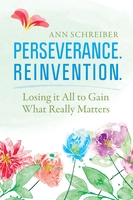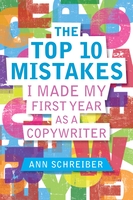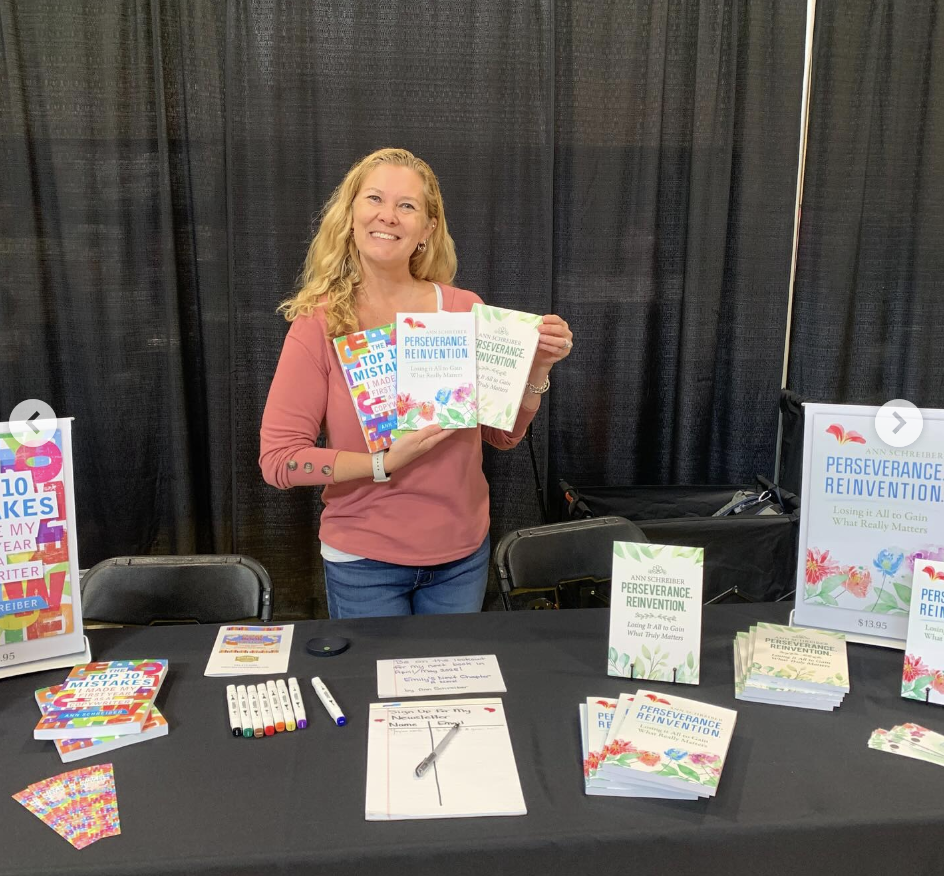If you’ve ever sat behind a table at a book fair or festival, you know it can feel a little like speed dating—except instead of looking for love, you’re hoping someone will take a chance on your book. As an author, getting involved in events like these can be an exciting way to connect with readers, fellow writers, and potential fans. But how do you turn curious glances into meaningful conversations—and, ideally, sales?
After attending and presenting at the Rosemount Writer’s Festival on March 15, 2025, and then hosting a table at the DSM Book Festival in Des Moines, IA, on March 22, I picked up (and tested out) a few strategies.
Whether you’re a first-timer or a seasoned fair-goer, here are my top tips for turning your next book table into a success story.
So, How Do You Actually Sell Books at a Book Fair?
Let’s be honest—just showing up and hoping people magically flock to your table isn’t enough. You might have the best book in the room, but if no one stops to check it out, your sales will reflect that. That’s where strategy comes in.
Over the years, I’ve worked plenty of events in marketing roles, so I already knew the basics: don’t hide behind your phone, avoid long chats with booth neighbors, and always make eye contact. But being an author behind the table is a different game. You’re not just selling a product—you’re sharing your story.
At the Rosemount Writer’s Festival and DSM Book Festival, I took what I knew and added a few new tricks to the mix. The result? Real conversations, consistent engagement, and steady book sales. Here are the strategies that helped me make the most of my time—and could help you do the same.
1. Ditch the Pitch—Start With a Question
At the Rosemount Writer’s Festival, I noticed the author next to me asking every passerby a simple question: “What types of books do you like to read?”
This one question broke the ice, put visitors at ease, and created instant connection. Instead of launching into a sales pitch, the author made it about the reader first. I loved the approach so much I tried it myself at the DSM Book Festival. I switched things up with:
- “What are you reading right now?”
- “What’s your favorite genre?”
- “Looking to add more to that book bag?” (especially fun when people were already weighed down with purchases)
The results? In just three hours, I sold books, collected leads for my business, or added someone to my newsletter list every eight minutes on average.
2. Be Genuinely Engaged
Sounds simple, but it’s surprisingly easy to come across as disinterested when you’re sitting behind a table for hours. Your energy matters. A smile and a little eye contact go a long way. If someone glances at your table, give them a friendly “Hi there!” or “Find anything good yet today?” It signals that you’re approachable without being overbearing.
3. Create a Visually Inviting Table
Make your display pop. Use stands to prop up your books, bring a branded tablecloth if possible, and include signage that clearly says what your book is about in just a few words. Bonus points for a QR code leading to your website or email sign-up form.
Pro tip: A bowl of candy can’t hurt, either. It’s amazing how many people slow down for chocolate—and then stay to chat.
4. Know Your Quick Pitch—But Don’t Overdo It
When someone shows interest, be ready with a quick, casual description of your book. Think of it as your “elevator sentence,” not an elevator speech. Keep it short, clear, and with just enough intrigue to prompt a follow-up question.
For example, I sold The Top 10 Mistakes I Made My First Year as a Copywriter by sharing, “This one’s for anyone curious about freelancing or marketing—it’s basically everything I learned the hard way, so you don’t have to.”
5. Offer Multiple Ways to Connect
Not everyone will buy a book on the spot—but that doesn’t mean they’re not interested. Have a simple way for people to stay in touch. I keep a clipboard out with a space to sign up for my newsletter, and I also hand out business cards with my website and social links.
You never know when a “not today” turns into a “just ordered it online” later that week.
6. Tailor Your Approach to the Crowd
At the DSM Book Festival, the layout encouraged people to visit every booth, which made engagement easier. But even when foot traffic is slower, you can still be proactive in a natural way. Observe what’s working for other authors around you, and be open to testing different questions or conversation starters.
7. Celebrate Every Win—Big or Small
Book fairs aren’t just about making money. They’re about visibility, connections, and momentum. Every book sold, every subscriber added, and every genuine conversation is progress. And sometimes, that one quick chat turns into a long-term reader or client.
Ready to Level Up Your Author Game?
Whether you’re a self-published author trying to build an audience or a seasoned pro looking to expand your reach, having a plan for book events matters. At Copywriting For You, I help business owners and authors find their voice, build their presence, and tell their stories in compelling, clear, and marketable ways.
Want help building your author brand or learning how to write a blog that gets results? Schedule a consultation today! And in the meantime, don’t forget to order your copies of my books! Links below!



